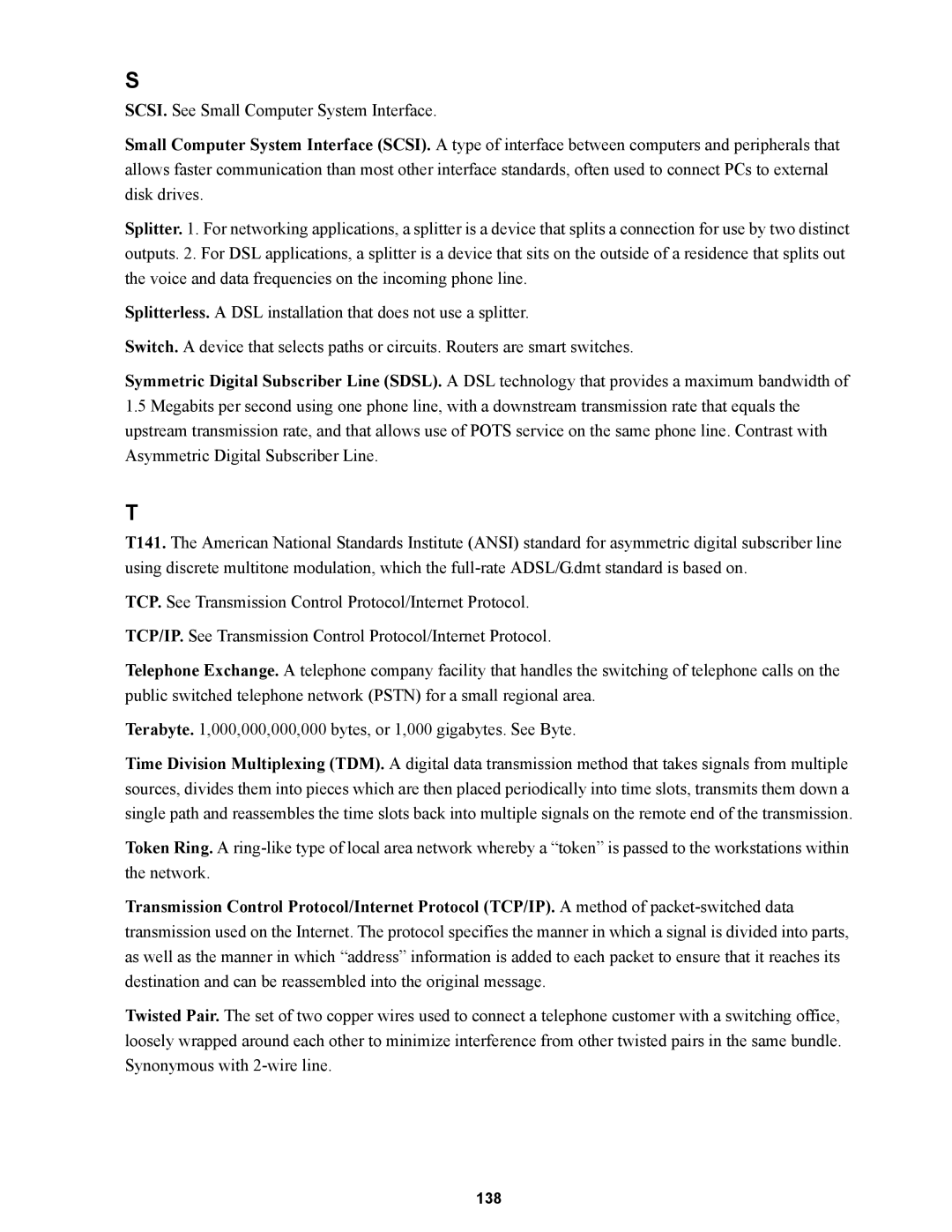S
SCSI. See Small Computer System Interface.
Small Computer System Interface (SCSI). A type of interface between computers and peripherals that allows faster communication than most other interface standards, often used to connect PCs to external disk drives.
Splitter. 1. For networking applications, a splitter is a device that splits a connection for use by two distinct outputs. 2. For DSL applications, a splitter is a device that sits on the outside of a residence that splits out the voice and data frequencies on the incoming phone line.
Splitterless. A DSL installation that does not use a splitter.
Switch. A device that selects paths or circuits. Routers are smart switches.
Symmetric Digital Subscriber Line (SDSL). A DSL technology that provides a maximum bandwidth of
1.5Megabits per second using one phone line, with a downstream transmission rate that equals the upstream transmission rate, and that allows use of POTS service on the same phone line. Contrast with Asymmetric Digital Subscriber Line.
T
T141. The American National Standards Institute (ANSI) standard for asymmetric digital subscriber line using discrete multitone modulation, which the
TCP. See Transmission Control Protocol/Internet Protocol.
TCP/IP. See Transmission Control Protocol/Internet Protocol.
Telephone Exchange. A telephone company facility that handles the switching of telephone calls on the public switched telephone network (PSTN) for a small regional area.
Terabyte. 1,000,000,000,000 bytes, or 1,000 gigabytes. See Byte.
Time Division Multiplexing (TDM). A digital data transmission method that takes signals from multiple sources, divides them into pieces which are then placed periodically into time slots, transmits them down a single path and reassembles the time slots back into multiple signals on the remote end of the transmission.
Token Ring. A
Transmission Control Protocol/Internet Protocol (TCP/IP). A method of
Twisted Pair. The set of two copper wires used to connect a telephone customer with a switching office, loosely wrapped around each other to minimize interference from other twisted pairs in the same bundle. Synonymous with
